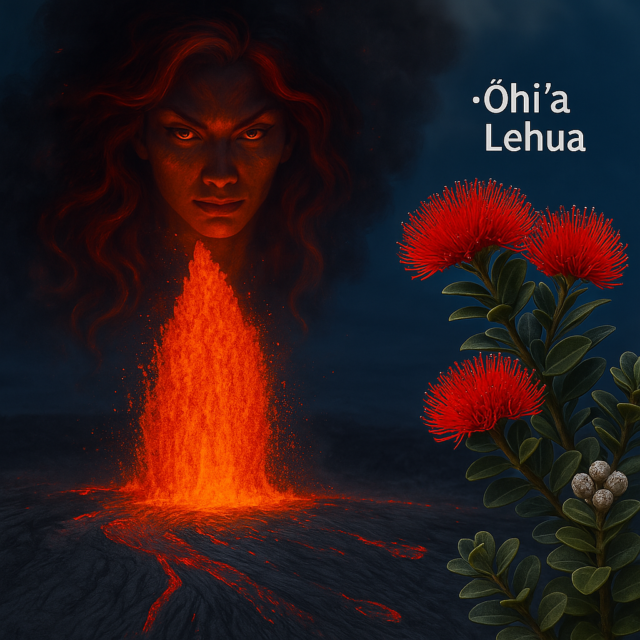A Creation Story of Fire, Water, and the Firstborn Isle
Written by Jack Turner
They say it began with fire. Always does. Fire beneath the waves, cracking open the ocean floor like the bones of some ancient leviathan. And from that molten fracture rose land—not in defiance of the sea, but in dance with it.
That’s the version science will tell you: the Hawaiian hotspot, a stationary plume beneath the Pacific Plate, punching through the crust like a spiritual geyser every few million years. As the tectonic plate drifts northwest, new islands form, the older ones dragged away, eroded, worn smooth and wise.
And at the head of that chain sits Kauaʻi, the elder. Born roughly 5.1 million years ago, she is the grandmother of the main Hawaiian Islands. Her edges are softened, valleys carved deep by time and rain. If Hawaiʻi Island is the baby, raw and erupting, Kauaʻi is the kupuna—stoic, green, cloaked in mist and memory.
But this geological procession only tells part of the story.
Hawaiians—those who remembered the world in chant, not textbooks—knew something deeper.
In the beginning, they say, there was Pō—the deep darkness. From Pō emerged Wākea (the Sky Father) and Papahānaumoku (the Earth Mother). Their union birthed the islands themselves. And Kauaʻi? She was among the first children, a sacred offering laid down in the vast blue moana.
But that’s just the polite version. The one you teach under a hala tree to curious keiki.
Talk to the old ones in hushed tones, and they’ll tell you of Mū—not a myth, but a memory. A sunken continent. A continent of light. Some whisper Kauaʻi is the last high peak of this lost land. Not because it survived, but because it was never meant to sink.
Kauaʻi, they say, is not just an island. She is the altar—the crown of the fallen realm. The place where old souls go to remember who they were before the world forgot.
Where Science Meets Moʻolelo
Science and story are two sides of the same lei.
- Science says: The islands were created by a volcanic hotspot as the Pacific Plate moves northwest. Kauaʻi is the eldest. You can date this with radiometric tools, measure it with GPS.
- Moʻolelo says: The islands were birthed by divine union. Pele carved the land with her staff, Pāʻoa, as she fled her sister Namakaokaha‘i, goddess of the sea.
- Ancient lore says: Kauaʻi may be the last standing remnant of the ancient continent of Mū—the high altar of a submerged realm.
Episode 15 – Pele Rises Again
Fast forward to now—March 25th, 2025. Kīlauea speaks again.
Episode 15 of the eruption series. 700-foot fountains of lava—Pele rising in fury or celebration, depending on how you see her. The USGS calls it volcanic activity. The kupuna call it hoʻōla—healing, renewal. A reckoning.
What science calls pressure and heat, the Hawaiian psyche calls mana.
And what you feel when standing on the crater rim, that’s not seismic tremor. That’s something else. Something older. Something that says: “You are not a visitor here. You are a story, just like I am.”
Standing on the edge of Halemaʻumaʻu, you might notice a blooming ʻōhiʻa lehua, scarlet blossoms trembling in the updraft. The legend goes, if you pluck the flower, it rains. That’s the grief of Pele and her lost lover, ʻŌhiʻa.
Yet there she blooms, on the edge of fire.
And so does Kauaʻi—green and burning in spirit, even if her lava sleeps. She is where Pele passed through. She is the sacred trailhead of the flame.


Leave a Reply